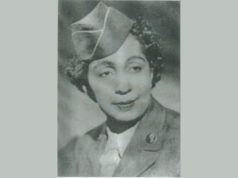By the fall of 2011, if the courts or legislators don’t act to stop it, Texas could become the “nuclear waste dump for the country if not the world,” State Rep. Lon Burnam says. And he and a coalition of environmental groups are leading a last-ditch effort to stop the waste trains and trucks from rolling through Fort Worth and other parts of Texas to the site on the New Mexico border — owned by a major contributor to Gov. Rick Perry — that sits atop part of the nation’s largest aquifer.
 The 1,338-acre site was licensed in 2009 with authority to accept nuclear waste from only two states, Texas and Vermont, plus “byproducts” from certain closed federal sites such as uranium processing plants. Now, however, after heavy lobbying from the dump’s Dallas billionaire owner Harold Simmons, the state’s Low-Level Radioactive Waste Disposal Compact Commission is set to vote in early January on a rule that would allow the dump to throw open its gates to nuclear waste from every state.
The 1,338-acre site was licensed in 2009 with authority to accept nuclear waste from only two states, Texas and Vermont, plus “byproducts” from certain closed federal sites such as uranium processing plants. Now, however, after heavy lobbying from the dump’s Dallas billionaire owner Harold Simmons, the state’s Low-Level Radioactive Waste Disposal Compact Commission is set to vote in early January on a rule that would allow the dump to throw open its gates to nuclear waste from every state.
The original license was approved by the Texas Commission on Environmental Quality only after years of geological study, environmental impact statements, and public hearings. But the new rule, vastly increasing the volume of dangerous wastes moving to the site, could be approved by the waste disposal commission without any public hearings, further studies, or input beyond a 30-day comment period, which ends this week.
Karen Hadden, head of the nonprofit Sustainable Energy and Economic Development Coalition based in Austin, is pushing her member groups to demand that TCEQ require a full environmental impact study to be undertaken before any waste crosses the Texas border. “This will have a tremendous environmental impact on West Texas and the aquifers there, and it makes no sense not to do [the environmental studies],” she said.
The granting of the original license to Waste Control Specialists, owned by Simmons, was hugely controversial. TCEQ approved the license despite vigorous opposition from the state’s own scientific experts, who found that the site was geologically unsound and would not be stable enough to protect humans and the environment, especially the Ogallala aquifer, during the hundreds of thousands of years that the wastes will be dangerous. Three TCEQ employees resigned in protest when the agency overruled their recommendation that the license be denied.
In recent months, however, the full story of that licensing process has been revealed by one of the three TCEQ employees who quit. Glenn Lewis, the technical editor of the TCEQ team at that time, is now one of the agency’s most vocal critics.
The potential for contamination of the Ogallala is real, said Lewis, and that fact was explained in detail to top TCEQ administrators and commissioners at the time.
After four years of study of the Waste Control application, the TCEQ technical team reported in a memo that because groundwater from two nearby water tables would “intrude into the … disposal units and contact the waste,” the site “is not suitable for near-surface disposal of radioactive waste.”
Although Waste Control Specialists claimed initially that there was at least 120 feet of “impenetrable red bed clay between the site and the nearest groundwater, the team found groundwater within 12 feet of the bottom of the storage facility,” Lewis said, “too close for a facility that must contain waste for more than 50,000 years.
“It is a tenet of federal and state law that intrusions of water into buried radioactive waste must be avoided,” he said. “This site does not in any way, shape, or form meet those standards.” He pointed out that “low-level” does not mean “low-radiation.” It can be “the most dangerous kinds of waste” from nuclear power plants and nuclear weapons programs, he said.
The West Texas site is a “nest of related holes in the ground [for burial of all of the different types of waste sent there],” he said, “and there was always standing water in the pits, seeping into the trenches. There was no rainfall, so this had to be moving groundwater,” he said.
The team scheduled a meeting with then-TCEQ deputy director Dan Eden to share their concerns. “We told him that the site was fatally flawed. … I remember one [team] member telling Eden that if one were to stand on the floor of the proposed facility, a ‘wall of water would come toward you from three directions.’ ” Eden was told that because groundwater would very likely intrude into the disposal sites, there was an increased risk that the public would be exposed to radioactive material in their drinking and agricultural water.”
The team was met with “dead silence,” Lewis said.
At the conclusion of the meeting, Lewis heard Eden tell the agency’s general counsel that TCEQ “had to find a way to issue this license. … I was stunned, as we had just spent an hour explaining why this site would not work.”
After the meeting, Lewis and his team members prepared and signed the memo to Eden and Susan Jablonski, director of TCEQ’s radioactive materials division, explaining why the site was highly unsuitable for a radioactive waste dump. Shortly after that, Lewis and the team members were informed by Eden that TCEQ’s then-Executive Director Glenn Shankle had decided to support the license application.
Eden ordered the team to begin drafting a report that would justify licensing the site as soon as possible, Lewis said. He said Eden told the team that Waste Control executives “were impatient to receive a draft license for its review.”
Lewis refused and soon resigned in protest along with two other TCEQ employees. “All of our work was for nothing,” Lewis said. “It was clear that we were supposed to find some way around the problems, we were to find some way to license the place that would pass the smell test. … Well, there was no way.”
Later that year, Jablolnski acknowledged in memos to senior TCEQ management that “faulty site conditions exist and that they cannot be corrected through license conditions,” Lewis said. Still, she supported the license.
Contacted at her Austin office, Jablonski promised to have a staff person call back to answer questions, but no one had called by press time. Eden and Shankle could not be reached for comment.
With all of the existing low-level dumps across the nation either shut down or closed to outside states’ waste, Burnam said Texas is set to become the permanent home to millions of gallons of radioactive wastes and tons of toxic nuclear debris. The U.S. Department of Energy estimates that 138 million pounds of nuclear waste are piling up at power plants in 36 states along with tons of radioactive wastes from the nation’s weapons programs — all with no place to call home.
Burnam, a Fort Worth Democrat, filed a bill last year that would have given the legislature — rather than the waste commission — the power to determine which states can export their nuclear leftovers to Texas, but the bill failed. He said the legislature could still intervene after it convenes in January, but he thinks that’s highly unlikely.
Hadden also thinks it’s possible that radioactive waste from other countries will end up in West Texas, although the dump’s license doesn’t allow it. “It will be very simple for foreign waste to come into this country, be repackaged at a Tennessee reprocessing plant, re-labeled, and sent to West Texas,” she said.
After TCEQ approved the West Texas dump’s license, the waste compact commission was created to oversee it — and given the authority to make the rule changes.
Two of the eight waste compact commission members have expressed skepticism about the proposed rule change, but they don’t expect to prevail.
The waste commission set the required 30-day comment period, which ends in just a few days, on Dec. 26. Commissioners Bob Gregory and Bob Wilson expressed concerns about the proposed rule change and asked for a longer comment period but were outvoted.
The timing of the comment period is another thing that angers Hadden. “This is typical of the way things operate in Austin, setting this 30-day comment period during the holidays, when folks are very busy, and few people are paying attention to an obscure rule change by an agency that few have even heard of,” she said.
Nonetheless, at a recent meeting of the waste commission in Austin, more than two dozen people showed up to protest the rule change, Hadden said. “Only about four came in support, and they were all either representatives of waste generators or Simmons’ lobbyists.”
The Sierra Club has filed two lawsuits in Travis County opposing the licenses granted to Simmons’ company. One suit has been heard, and the group is waiting for a judge’s ruling. The second has yet to go to trial, a Sierra Club official said.
Simmons, whose companies are worth around $5 billion according to Forbes magazine, is a heavy-hitter in GOP campaign circles, contributing more than $3.5 million to Republicans since 2000, according to campaign finance reports. Texans for Public Justice reports that those contributions have included more than $1.1 million for Perry since 2006, including half a million dollars in just the past four months.
Additionally, two of Simmons’ lobbyists are former heads of state agencies long involved in the effort to find a low-level waste repository in the state — Rick Jacobi of Austin, who once headed the now-defunct Texas Low-Level Radioactive Waste Authority, and Shankle, the former executive director of TCEQ who approved the low-level licensing of Simmons’ dump before he quit to join Simmons’ team.
If the dump is indeed allowed to accept waste from all over the country, Simmons stands to make millions of dollars during the next 15 years in which the license runs. Then he could walk away, and control and maintenance of the dump would revert to the state — for thousands of years. “Liability for any nuclear accidents or radiation leaks into the environment would be borne by the state’s taxpayers,” Burnam pointed out.
Lewis said that regulators and Simmons’ company officials can talk all they want about ways to mitigate problems at the site or limit damage to the environment. But what they can’t change, he said, is the basic geology.
“Other defects with the application could have been addressed through special license conditions, but the geology of the site cannot be altered. It is incompatible with protecting the environment from radiation exposure,” he said. “We communicated this very clearly to TCEQ management.
“I spent four years on this [application review] and a year in Vietnam,” Lewis said. “Believe me, it was worse than Vietnam.”











